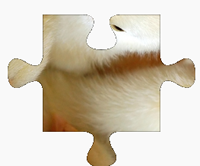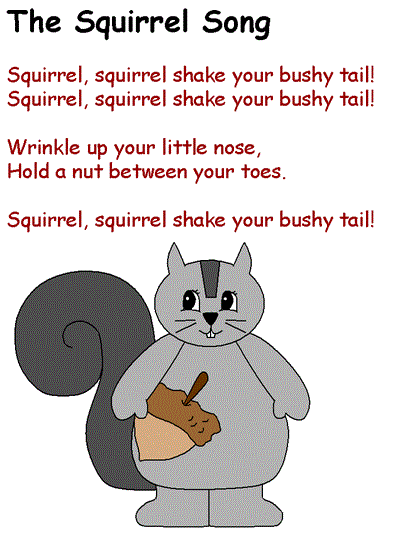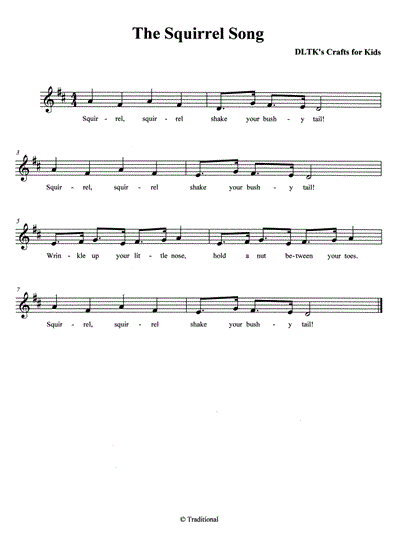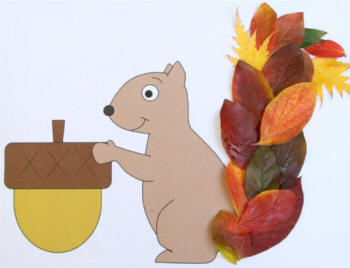Listen to the classic children’s song "The Squirrel Song".
DLTK's Songs for Children
The Squirrel Song
Squirrel, squirrel shake your bushy tail!
Squirrel, squirrel shake your bushy tail!Wrinkle up your little nose,
Hold a nut between your toes.Squirrel, squirrel shake your bushy tail!
Squirrel Song Crafts:
On-Line Games and Puzzles:

Squirrel On-Line Jigsaw Puzzles
The History of "The Squirrel Song"
"The Squirrel Song" is a charming children's song written by Leanne Guenther in the early 2000s. The inspiration for the song came from Leanne's daughter, who loved visiting the squirrels in Carburn Park with her Grandma Gloria. The park, located close to their home, was a favorite spot for walks and observing the playful antics of the squirrels.
Inspiration and Creation
- Family Collaboration: The song was a collaborative effort between Leanne, her daughter, and Grandma Gloria. They wrote the song together during a joyful afternoon, sharing giggles and a pot of mint tea. This personal and familial touch adds a layer of warmth and authenticity to the song, reflecting the joyful experiences they shared.
- Connection to Nature: The song captures the simple pleasures of observing nature and the playful behavior of squirrels. This connection to the natural world makes the song relatable and engaging for children, who often enjoy learning about animals and their habits.
Educational Uses
- Motor Skills and Engagement: The song encourages children to mimic the actions of a squirrel, such as shaking their "bushy tail" and holding a nut. These actions help develop fine motor skills and coordination.
- Language Development: The song's repetitive structure and playful lyrics aid in language acquisition, helping children expand their vocabulary and improve pronunciation.
- Interactive Learning: "The Squirrel Song" is often used in early childhood education settings to promote active participation and social interaction among children.
Cultural Impact
Although relatively recent in origin, "The Squirrel Song" has become a favorite in classrooms and homes, appreciated for its simplicity and ability to engage young children in playful learning. It serves as an excellent example of how personal experiences and family creativity can inspire educational content that resonates with a broad audience.




